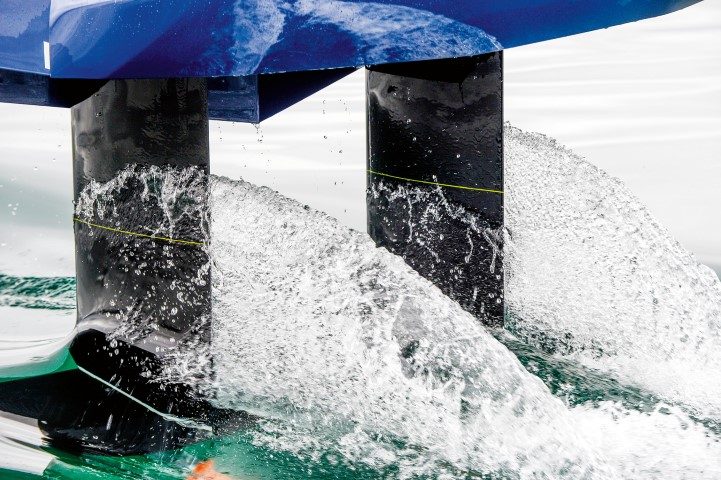

Cities built around rivers and the sea could soon be using an additional transport option to alleviate gridlock traffic.
The brainchild of a pair of French gents, the SeaBubble is essentially an electric water taxi on foils, designed to whisk passengers along rivers and canals and across bays.
As an energy-efficient, electric vessel, it not only offers a silent journey, it’s also one that lets you feel like you’re helping to save the planet. On foils it’s a smooth trip – no need to worry about delicate tummies and upchucking when returning from a long, working lunch across town. Best of all, though, by sticking to the water you’ll eliminate the frustration that comes with sitting for hours in constipated traffic.

Best described as a ‘flying taxi,’ the SeaBubble is powered by lithium batteries. It rises 750mm above the water on its hydrofoils, reaching a top speed of some 35km/h. Each vessel accommodates four passengers. As the vessel nears its destination the SeaBubble slowly settles back in the water and comes alongside the dock.
The SeaBubble is an amalgamation of technology from diverse industries: the foils derive from the aeronautical industry, the steering and navigational system come from boats and the design for the upper deck comes from the car industry.

Co-founders Alain Thebault and Anders Bringdal envisage a network of SeaBubble water taxis in more than 50 cities around the world which, they say, could help to alleviate ‘global gridlock’ created by billions of cars on the road.
Following the development of the prototype SeaBubble, the Parisian company has completed the French certification process and it’s now allowed to operate as a professional transport vessel. Production has begun, with the first vessels scheduled for delivery early in 2020.

The company has received plenty of interest from around the world, particularly from luxury hotels and local transport authorities. As with Uber, passengers will be able to hail the SeaBubble with a smartphone app.
SeaBubble’s docking stations – located all around a city’s waterfront – are to be equipped with solar panels and – where appropriate – underwater turbine generators. These technologies can be used to recharge the vessels while they’re waiting for passengers.
Sounds like a perfect fit for Auckland.




